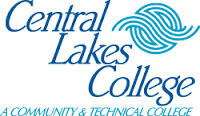What do they do?
Lay pipe for storm or sanitation sewers, drains, and water mains. Perform any combination of the following tasks: grade trenches or culverts, position pipe, or seal joints.
Also known as:
Pipelayer, Tailman, Waste Water Worker
-
1.4%
Change
Ranks #26 in job growth rate60Job Openings
Ranks #20 in net job growth
Looking for colleges that offer a specific major? Use the College Match Tool to find your best-matched schools and discover your estimated Net Price!
- High school diploma equivalent (46%)
- Less than high school diploma (27%)
- Some college, no degree (19%)
- Associate's degree (4%)
- Bachelor's degree (3%)
- Master's degree (1%)
- Doctorate or Professional Degree (<1%)
Most Popular Majors that prepare Pipelayers
-
#1
-
Degrees Granted
46
-
Female Students
2
-
Male Students
44
-
Median Starting Salary
$47,900
-
-
#2
-
Degrees Granted
9
-
Female Students
5
-
Male Students
4
-
Median Starting Salary
$37,600
-
-
#3
-
Degrees Granted
5
-
Female Students
2
-
Male Students
3
-
Median Starting Salary
$37,600
-
-
#4
-
Degrees Granted
3
-
Female Students
2
-
Male Students
1
-
Median Starting Salary
$37,600
-
People in this career often know a lot about:
- Building and Construction - Knowledge of materials, methods, and the tools involved in the construction or repair of houses, buildings, or other structures such as highways and roads.
- Mechanical - Knowledge of machines and tools, including their designs, uses, repair, and maintenance.
- Mathematics - Knowledge of arithmetic, algebra, geometry, calculus, statistics, and their applications.
- Public Safety and Security - Knowledge of relevant equipment, policies, procedures, and strategies to promote effective local, state, or national security operations for the protection of people, data, property, and institutions.
People in this career often have talent in:
- Oral Comprehension - The ability to listen to and understand information and ideas presented through spoken words and sentences.
- Arm-Hand Steadiness - The ability to keep your hand and arm steady while moving your arm or while holding your arm and hand in one position.
- Control Precision - The ability to quickly and repeatedly adjust the controls of a machine or a vehicle to exact positions.
- Near Vision - The ability to see details at close range (within a few feet of the observer).
People in this career often do these activities:
- Position hand tools.
- Cut metal components for installation.
- Apply adhesives to construction materials.
- Weld metal components.
- Spread sand, dirt or other loose materials onto surfaces.
- Install plumbing or piping.
- Maintain plumbing structures or fixtures.
- Evaluate projects to determine compliance with technical specifications.
- Mark reference points on construction materials.
- Communicate with other construction or extraction personnel to discuss project details.
- Operate equipment or vehicles to clear construction sites or move materials.
- Drive trucks or truck-mounted equipment.
- Compact materials to create level bases.
- Dig holes or trenches.
- Drill holes in construction materials.
- Locate equipment or materials in need of repair or replacement.
- Train construction or extraction personnel.
- Direct construction or extraction personnel.
This page includes data from:

 Occupation statistics: USDOL U.S. Bureau of Labor Statistics Occupational Employment Statistics
Occupation statistics: USDOL U.S. Bureau of Labor Statistics Occupational Employment Statistics
 Videos: CareerOneStop, USDOL/ETA and the Minnesota Department of Employment & Economic Development
Videos: CareerOneStop, USDOL/ETA and the Minnesota Department of Employment & Economic Development








